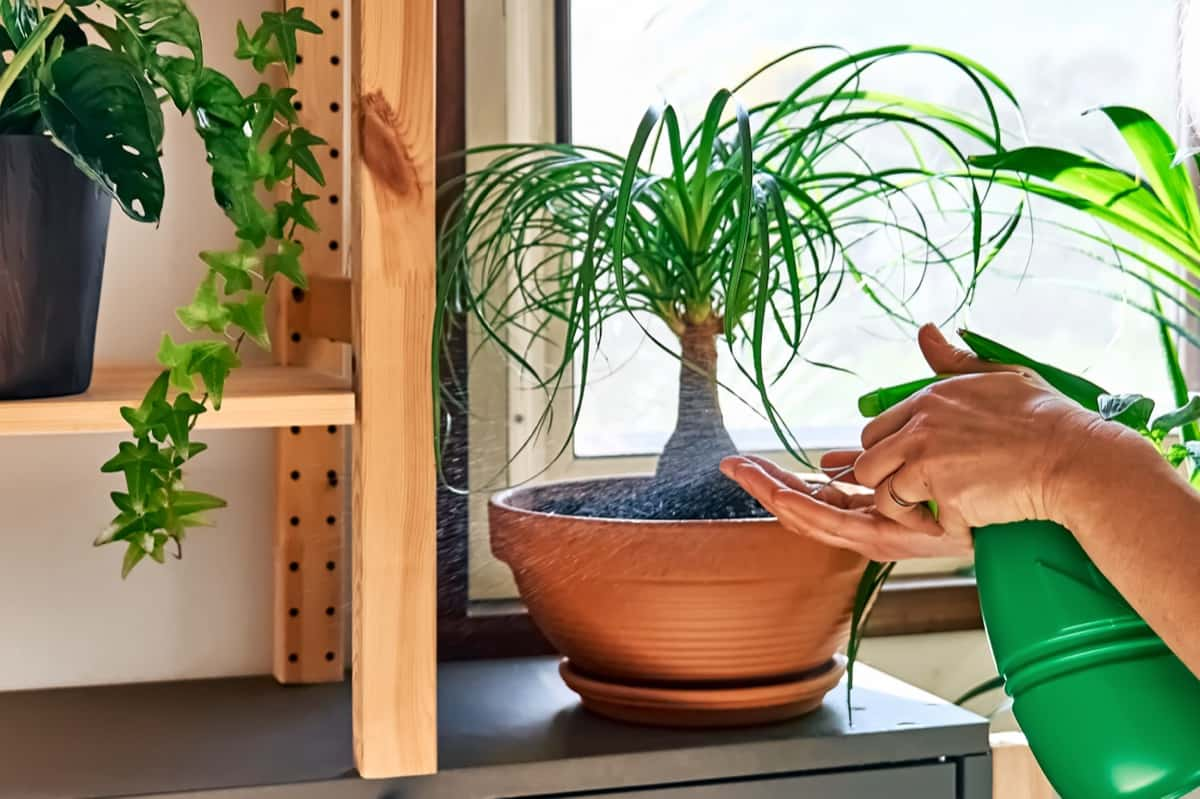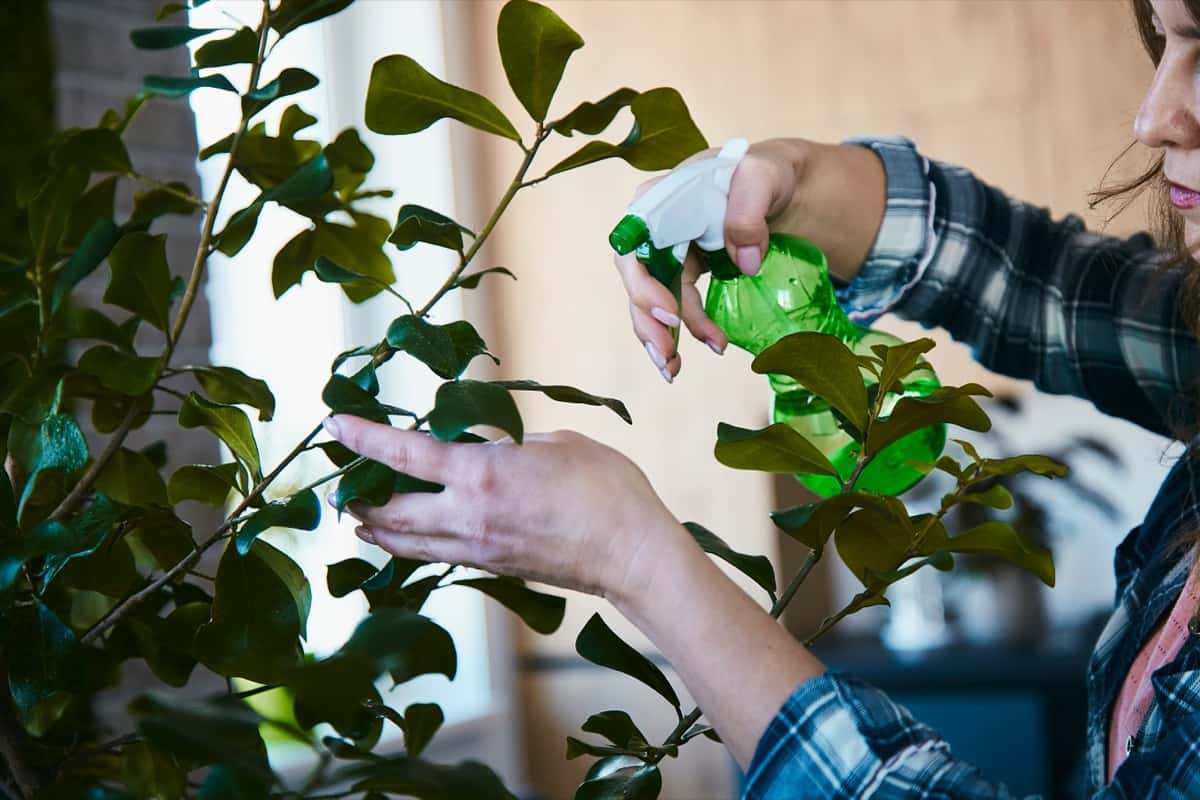A flourishing garden is a sight to behold, but it takes diligent care and the right strategies to keep your plants healthy and vibrant. One of the gardeners’ biggest challenges is the continual onslaught of pests and diseases. While many commercial products are available to combat these issues, many gardeners prefer a more natural, organic approach.

Mint spray distinguishes itself among various organic solutions for its notable simplicity and high efficacy. This homemade remedy utilizes mint’s power to free your plants from pests and diseases, allowing them to thrive. This comprehensive guide will delve into the intricacies of mint spray, from its preparation to its application and the numerous benefits it brings to your home garden.
Homemade Mint Spray for Pest and Disease Control
What is Mint Spray?
The onset of the growing season brings an exciting time for green thumbs, but this can also be the opportune moment for the emergence of numerous pests and diseases. For many plant lovers and gardeners, their first line of defense is a powerful yet natural and organic solution known as a mint spray.
The mint spray is a homemade concoction that harnesses the incredible properties of mint to naturally fend off a variety of common pests and diseases that threaten the health of plants. It is a popular choice among organic gardeners due to its efficacy, cost-effectiveness, and because it’s free from harmful chemicals.
What Are the Ingredients Needed to Make Mint Spray?
When the question arises – how do you make a mint spray for plants, the answer is rather simple. Making mint spray requires only a few readily available ingredients. The key ingredient is, of course, mint leaves. Any variety of mints will work, including but not limited to peppermint and spearmint. Other ingredients besides mint leaves include water, liquid soap (preferably a mild, organic one), and an optional pinch of cayenne pepper further to boost the spray’s potency against stubborn pests.
In case you missed it: Hydroponic Mint Farming in a Greenhouse: Key Rules to Start from Scratch

Recipe/Prepare Mint Spray at Home
Creating a homemade spray to keep bugs off plants couldn’t be easier. Start by gathering a handful of fresh mint leaves. Thoroughly rinse the leaves to eliminate any dirt particles, then transfer them to a bowl. Use the back of a spoon or a pestle to gently crush the leaves, releasing their potent oils.
After this, transfer the crushed mint leaves into a jar, add a teaspoon of liquid soap, a pinch of optional cayenne pepper, and pour about two cups of boiling water. Let this mixture steep overnight, allowing the natural mint oils to infuse the water. Strain the solution into a spray bottle the next day, discarding the solids. Your homemade mint spray is now ready for use.
How Does Mint Spray Work?
Mint spray works due to the potent properties of mint. The smell of mint is pleasing to us but is detested by many pests. When applied, the intense fragrance confuses pests, repelling them; in some cases, the potent compounds can even kill them. Additionally, including soap in the spray helps break down the protective barriers of some pests, making the mint even more effective. This makes mint spray a formidable, homemade bug spray for indoor and outdoor plants.
What Pests and Diseases Can Mint Spray Control?
The strength of mint spray comes from its versatility in handling various pests and diseases. Common pests such as aphids, cabbage loopers, flea beetles, squash bugs, whiteflies, and spider mites detest the smell of mint and will quickly vacate plants that have been sprayed. The spray also deters larger pests like rabbits and deer. On the disease front, mint spray can prevent fungal growth, as the oils disrupt the conditions that fungi need to grow and multiply.
In case you missed it: How to Grow Mint from Cuttings: DYI in 10 Simple Steps

How to Store Mint Spray?
After understanding the benefits of mint spray, the next point of concern is its storage. The best place to store your homemade mint spray is in a cool, dark place, like a pantry or cupboard. It’s also crucial to keep it in a sealed container or spray bottle to maintain the potency of the mint. It is recommended to use the spray within a week for maximum effectiveness.
How Often Should You Use Mint Spray for Your Plants
A major aspect of successful gardening with mint spray is knowing the frequency of its application. As a rule of thumb, you should use mint spray about once a week for preventive measures. However, if your plants are already infested, it’s advisable to use the spray every two to three days until the pests are entirely eradicated.
Best Time to Apply and How Much Mint Spray Should You Use For Your Garden Plants
The best time to apply mint spray to your garden plants is early morning or late evening when the temperatures are cooler. This mechanism safeguards the leaves against sunburn while damp. When applying, ensure that you spray both the top and bottom of the leaves, as pests can often hide underneath them. As for the quantity, a light, even coating over the plants should be sufficient. You want to avoid drenching the plants, as too much moisture can invite other issues like mold growth.
How Long Does It Take for Mint Spray to Work for Your Plants?
After application, the mint spray begins to work almost immediately. The strong scent will deter pests immediately, and you should notice a decrease in pest activity within 24 hours. However, for more stubborn infestations, it may take a few days of consistent application to completely eradicate the pests.
Benefits of Plants of Using Mint Spray in the Home Garden
The use of mint spray in the home garden carries numerous benefits. It’s a cost-effective, organic solution that allows gardeners to avoid using harmful chemical pesticides. It helps to control a wide variety of pests, thus maintaining the overall health of your plants. By reducing pest activity, your plants can thrive, yielding better flower or crop production. The mint spray also contributes to biodiversity by eliminating chemical pesticides that can harm beneficial insects and other wildlife.
Safety Precautions When Using Mint Spray
While mint spray is natural and generally safe, taking a few precautions is still essential. Always wear gloves when handling and applying the spray to protect your skin from potential irritation. It’s also advisable to avoid spraying on windy days to prevent the spray from getting into your eyes.
In case you missed it: Frequently Asked Questions About Mint Farming

While mint spray generally poses no harm to the majority of plants, it is advisable to conduct a preliminary test on a solitary leaf using a small quantity. Allow a 24-hour period for observation in order to identify any potential negative responses. With these precautions in place, mint spray can be a significant game-changer in your home garden’s fight against pests and diseases.
- Feed Your Flock for Less: Top 10 Tips to Save on Chicken Feed
- Ultimate Guide to Ossabaw Island Hog: Breeding, Raising, Diet, and Care
- Hatching Answers: The Top 10 Reasons Your Chickens Aren’t Laying Eggs
- Eggs and Economics: Breaking Down the Cost of Raising Backyard Chickens
- Defend Your Greens: Proven Methods to Keep Iguanas Out of Your Garden
- Ultimate Guide to Cinnamon Queen Chicken: A Comprehensive Guide for Beginners
- Ultimate Guide to California Tan Chicken: Breeding, Raising, Diet, Egg-Production and Care
- Ultimate Guide to Marsh Daisy Chicken: Breeding, Raising, Diet, and Care
- 10 Types of Chicken Farming Businesses You Can Start for Profits